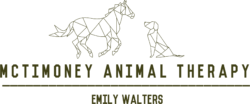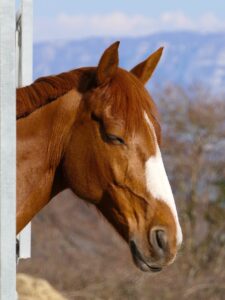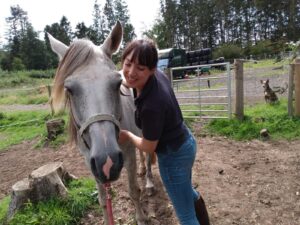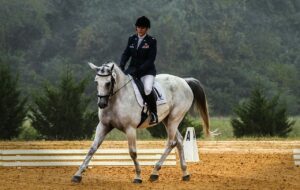Sarcoids are the most common nodular skin condition and they vary greatly in size and appearance. Although they are non-life threatening they tend to be locally invasive, hard to treat, and can result in the horse being destroyed due to poor quality of life. They are most commonly found on the head and neck, the groin, between the front legs although they can occur anywhere. They can also appear at the site of injuries and old scars.
There is currently research being undertaken linking the development of sarcoids with the bovine papilloma virus. Horses have various levels of immunity to the virus making their susceptibility various. Sarcoids cannot spread from horse to horse but they can be spread by flies who carry the virus from one area another of the horse, especially if there is a wound present. Care must be taken to protect wounds from flies if the horse already had a sarcoid elsewhere.
There are 6 types of sarcoid and treatment varies depending on type
-
Occult: Flat, grey, scaley patch of hair. Looks similar to ringworm in that it’s usually circular
-
Verrucose: Grey and scaley. More wart like with irregular edges. Often several of these occurring
-
Nodular: Appear as roundish, shiny lumps under the skin
-
Fibroblastic: Extremely invasive of the surrounding skin and are aggressive, often ulcerated, fleshy masses. They often occur where there has been a wound and grow rapidly.
-
Malevolent: The most aggressive and difficult to treat type of sarcoid, although it is relatively rare in the uk. Can spread through the skin and via lymph nodes with tumerous cords leading to secondary lesions.
How to treat Sarcoids
Treatment should occur promptly after diagnosis and will vary depending on sarcoid type, size and position. There are several forms of treatment available although none of them work all the time and reoccurrence is common.
Topical treatment – usually most effective for smaller, superficial lesions. In the uk this is a heavy metal preparation.
Ligation – a tight band is applied around the base of the sarcoid. Can be painful for the horse and tumour cells may left behind resulting in regrowth.
Surgery – there is a high failure rate with this method as the wound often heals poorly and reoccurrence is high.
Cryotherapy – the freezing of the sarcoid. Usually involves several treatments with the horse under general anaesthetic each time.
Immune therapy – stimulates the horses immune system to fight the sarcoid by injecting a substance such as BCG into the sarcoid. Commonly used to treat sarcoids around the eyes with some success. Unfortunately there is a risk of a reaction to this treatment and the horse has to be heavily sedated.
Radiation therapy – only available at very specialised centres, is very expensive and general anaesthetic is needed. It has, however, proved to be an effective treatment.
Laser removal – can be used with either local or general anaesthetic and a surgical laser is used to remove the sarcoid.
It is vital that any treatment undertaken is continued until the sarcoid is gone otherwise the risk is taken that the sarcoid will come back worse than before. Also an effective fly spray is a must especially if there is an open wound and in fly season. Hopefully in the future a vaccine will be available to help prevent these horrid, unsightly growths.
As with any trauma, its worthwhile to get your horses back checked over afterwards as compensation can occur leading to back problems.
There are 6 types of sarcoid and treatment varies depending on type
-
Occult: Flat, grey, scaley patch of hair. Looks similar to ringworm in that it’s usually circular
-
Verrucose: Grey and scaley. More wart like with irregular edges. Often several of these occurring
-
Nodular: Appear as roundish, shiny lumps under the skin
-
Fibroblastic: Extremely invasive of the surrounding skin and are aggressive, often ulcerated, fleshy masses. They often occur where there has been a wound and grow rapidly.
-
Malevolent: The most aggressive and difficult to treat type of sarcoid, although it is relatively rare in the uk. Can spread through the skin and via lymph nodes with tumerous cords leading to secondary lesions.
How to treat Sarcoids
Treatment should occur promptly after diagnosis and will vary depending on sarcoid type, size and position. There are several forms of treatment available although none of them work all the time and reoccurrence is common.
Topical treatment – usually most effective for smaller, superficial lesions. In the uk this is a heavy metal preparation.
Ligation – a tight band is applied around the base of the sarcoid. Can be painful for the horse and tumour cells may left behind resulting in regrowth.
Surgery – there is a high failure rate with this method as the wound often heals poorly and reoccurrence is high.
Cryotherapy – the freezing of the sarcoid. Usually involves several treatments with the horse under general anaesthetic each time.
Immune therapy – stimulates the horses immune system to fight the sarcoid by injecting a substance such as BCG into the sarcoid. Commonly used to treat sarcoids around the eyes with some success. Unfortunately there is a risk of a reaction to this treatment and the horse has to be heavily sedated.
Radiation therapy – only available at very specialised centres, is very expensive and general anaesthetic is needed. It has, however, proved to be an effective treatment.
Laser removal – can be used with either local or general anaesthetic and a surgical laser is used to remove the sarcoid.
It is vital that any treatment undertaken is continued until the sarcoid is gone otherwise the risk is taken that the sarcoid will come back worse than before. Also an effective fly spray is a must especially if there is an open wound and in fly season. Hopefully in the future a vaccine will be available to help prevent these horrid, unsightly growths.
As with any trauma, its worthwhile to get your horses back checked over afterwards as compensation can occur leading to back problems.
There are 6 types of sarcoid and treatment varies depending on type
-
Occult: Flat, grey, scaley patch of hair. Looks similar to ringworm in that it’s usually circular
-
Verrucose: Grey and scaley. More wart like with irregular edges. Often several of these occurring
-
Nodular: Appear as roundish, shiny lumps under the skin
-
Fibroblastic: Extremely invasive of the surrounding skin and are aggressive, often ulcerated, fleshy masses. They often occur where there has been a wound and grow rapidly.
-
Malevolent: The most aggressive and difficult to treat type of sarcoid, although it is relatively rare in the uk. Can spread through the skin and via lymph nodes with tumerous cords leading to secondary lesions.
How to treat Sarcoids
Treatment should occur promptly after diagnosis and will vary depending on sarcoid type, size and position. There are several forms of treatment available although none of them work all the time and reoccurrence is common.
Topical treatment – usually most effective for smaller, superficial lesions. In the uk this is a heavy metal preparation.
Ligation – a tight band is applied around the base of the sarcoid. Can be painful for the horse and tumour cells may left behind resulting in regrowth.
Surgery – there is a high failure rate with this method as the wound often heals poorly and reoccurrence is high.
Cryotherapy – the freezing of the sarcoid. Usually involves several treatments with the horse under general anaesthetic each time.
Immune therapy – stimulates the horses immune system to fight the sarcoid by injecting a substance such as BCG into the sarcoid. Commonly used to treat sarcoids around the eyes with some success. Unfortunately there is a risk of a reaction to this treatment and the horse has to be heavily sedated.
Radiation therapy – only available at very specialised centres, is very expensive and general anaesthetic is needed. It has, however, proved to be an effective treatment.
Laser removal – can be used with either local or general anaesthetic and a surgical laser is used to remove the sarcoid.
It is vital that any treatment undertaken is continued until the sarcoid is gone otherwise the risk is taken that the sarcoid will come back worse than before. Also an effective fly spray is a must especially if there is an open wound and in fly season. Hopefully in the future a vaccine will be available to help prevent these horrid, unsightly growths.
As with any trauma, its worthwhile to get your horses back checked over afterwards as compensation can occur leading to back problems.
Book a McTimoney Equine Chiropractic Treatment
Areas covered in UK: Worcestershire and surrounding counties.
Book a McTimoney Equine Chiropractic Treatment or Call Emily Walters on 07983 565 438



